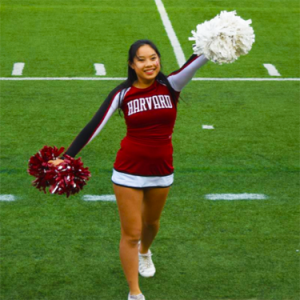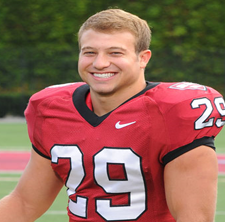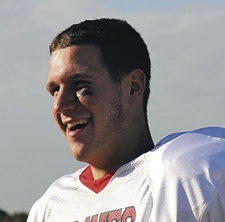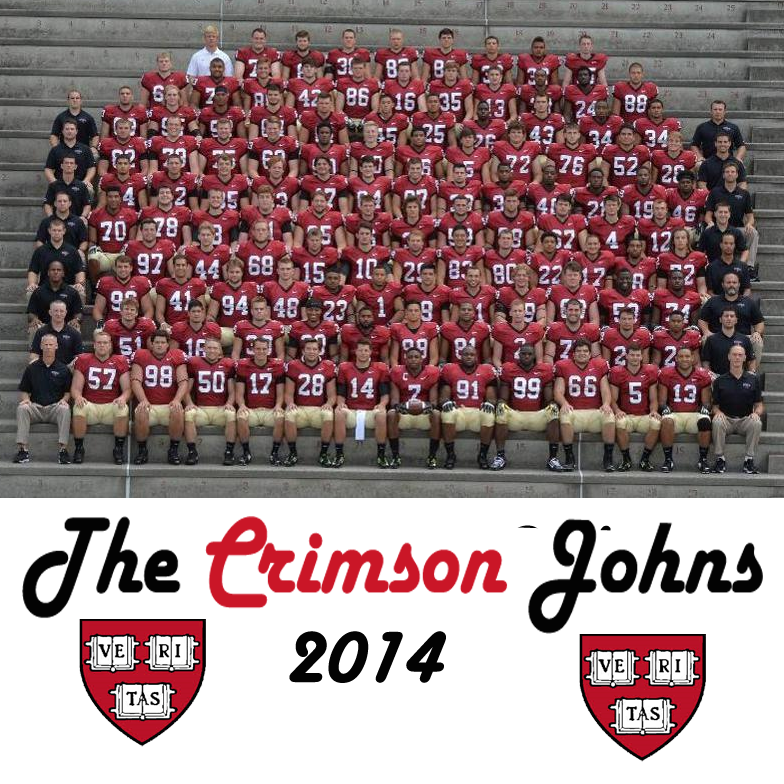The 1920 Rose Bowl, January 1, 102o, was the first return to colleges to play in the Rose Bowl after WWI. The Harvard Crimson defeated the Oregon Webfoots by a score of 7–6.
As the UW football season winds down to an anti-climatic try at a minor bowl game, this may be a good time to compare our program with the program at Harvard.
Going into the Yale game, Harvard is dominating the Ivies. One win away from an undefeated season and the Ivy League championship the Crimson roster includes several NFL prospects. This is not the team Ted Kennedy played for. (Based in part on an article in the Wall Street Journal).
Harvard’s Quarterback. Conner Hempel, is not your typical Cambridge John. Hempel, a 6-foot-3, 210- pound white football prospect from a Kentucky High School was  considering accepting offers to play for Miami (Ohio), Toledo, Bowling Green, Western Kentucky. Like any high school football star in the South or from a Black High school any place in the US, Hempel assumed Harvard was all about academics. Now, the John’s star QB says:
considering accepting offers to play for Miami (Ohio), Toledo, Bowling Green, Western Kentucky. Like any high school football star in the South or from a Black High school any place in the US, Hempel assumed Harvard was all about academics. Now, the John’s star QB says:
“We’re all about athletics as well.”
According to the Wall Street Journal, the 2014 Crimson roster includes 13 Johns from Texas, 13 Johns from Georgia and even a freshman John from the football powerhouse De La Salle High School of Concord, Calif. The 2014 team even dominated nonconference opponents Holy Cross, Georgetown and Lafayette. Clearly these talented kids are not choosing Harvard just for prestige .. Harvard requires hard assed work as students. They could go to any traditional football school where they would have their academic careers greased by compliant tutors and lax standards. These kids are going to Harvard because it offers hard work in the classroom as well as on the field.
How Does Harvard Attract ATHLETES?
The Ivy League doesn’t allow athletic scholarships. However, seven years ago, along with some other well endowed private universities, Harvard began granting

Paul Stanton Jr. , Harvard’s 5-foot-9 running back, an economics major who is averaging 110 yards a game with a total of 10 touchdowns, arrived on campus in 2012 from Jesuit High School in New Orleans weighing 175 pounds. Stanton says he hit the weight room and now eats four meals a day, plus a peanut butter and jelly sandwich every night. He now weighs 190, and runs a 4.4 in the 40-yard dash. He saw Harvard put eight players in NFL training camps this year, and he plans to be one of them 18 months from now.
“It’s always been a dream of mine,” Stanton said. “I don’t think you give that up just because you go to Harvard. I think it might even help you because these teams know how hard it is for us to balance football with school.”
an extremely generous financial-aid package to all admitted students based on a generous measure of need that includes most middle class families*. Harvard assumes all of its students are equally qualified to be Johns (including the women). Athletes are treated like all other students and Harvard’s student athletes have grades and test scores close to those of other students.
The aid packages compete with any university’s athletic scholarships AND offer a Harvard education. Harvard scholarships are based only on academic achievement. Football. swimming, tennis or crew are considered extra curricular activities. If a student gets injured or decides to quit the Hasty Pudding, leave the Crimson or become a Buddhist nun, he or she doesn’t lose the financial aid. On the other hand, players, like other students, can also take a year off to follow their interests. Paul Stanton, the Johns’ running back wants to join the NFL so he plans to take off next semester to train full-time.

“It’s kind of unfortunate we don’t (play first division teams) ” said Anthony Firkser, a sophomore tight end majoring in applied math and economics. “I think we’d have a pretty good chance.”
Then too, being a football star at Harvard is not the same as being a football star at the UW. Football stars need to vie with crew captains and biophysicists and Crimson editors and Rhodes scholars for attention. The big game is not a bowl game. The Ivies do not have a bowl game, instead Harvard will play second ranked Yale in a 140-year rivalry. Harvard Stadium (capacity 30,000) will be packed, not because the conference championship is on the line but because of the rivalry. Even ESPN is bringing its College GameDay show to the banks of the Charles for the one time Harvard Stadium will be even half-full for a game.
All this raises an interesting question. If Harvard can do this, can the Huskies also recruit true student athletes? At the risk of being called a racist, I suggest you look at this picture and imagine what a Husky team photo would look like if it was made up of the best student athletes from Washington state?. 
*Students from families with incomes under $65,000 pay nothing for tuition, room and board. Students from families with incomes of $65,000-$150,000 can be asked to contribute 0-10% of their family’s income. That figure can drop further if a student has siblings in college or other extenuating circumstances. The university doesn’t factor in a family’s home equity or retirement assets in assessing need, an unusual practice. Roughly 70% of students at Harvard receive aid, and 20% attend free. Athletes are treated the same as all other Harvard students.